Fish Tank Setup
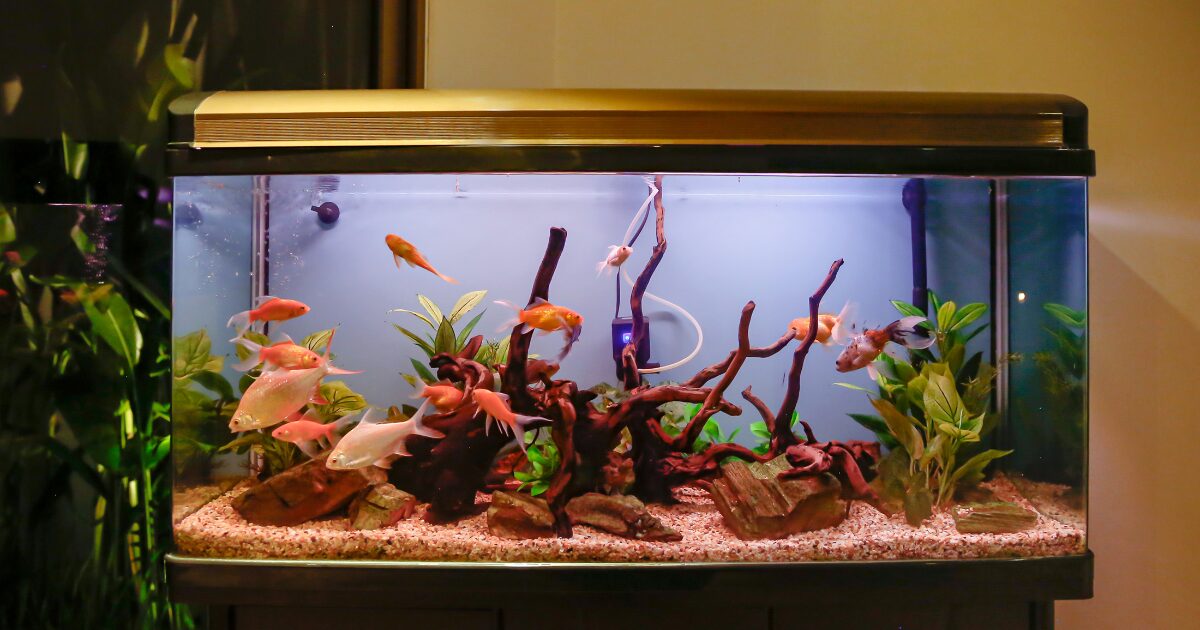
Introduction:
Setting up a fish tank for the first time can seem intimidating, but it doesn’t have to be. Imagine this: a vibrant, colorful aquarium in your dorm room, bringing life and tranquility to your space. The gentle bubbling of water and the graceful movement of your fish create the perfect calming atmosphere after a long day of classes or studying. An easy fish tank setup for beginners can transform your dorm room into an aquatic paradise in just a few simple steps.
In this guide, we’ll take you through everything you need to know about setting up a beginner-friendly fish tank, from choosing the right tank size to picking the ideal fish. Whether you’re a college student looking for a soothing hobby, a family looking to introduce kids to the wonders of aquatic life, or even a retiree seeking a peaceful pastime, this guide is for you. With our easy-to-follow steps, you’ll have everything you need to get your fish tank up and running without a hitch. So, let’s dive in!
Why an Easy Fish Tank Setup for Beginners is the Perfect Addition to Your Dorm Room
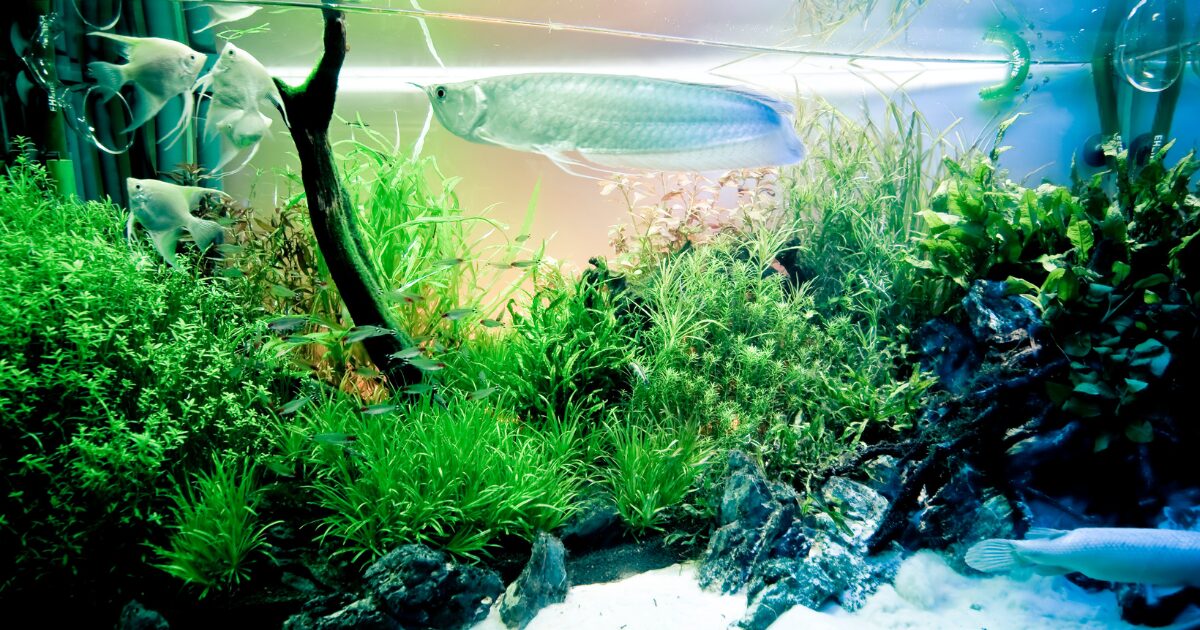
When you think about creating the perfect dorm room environment, you likely picture a cozy, personalized space. Whether it’s your go-to study nook or your favorite corner to relax after a busy day, your room is a place where you can unwind. Adding an aquarium could be the perfect way to elevate your space even further—here’s why.
An easy fish tank setup for beginners is the perfect way to transform your dorm room into a calming retreat. The beauty of a well-maintained aquarium is that it creates a peaceful ambiance with minimal effort. After a stressful day of lectures, assignments, and late-night study sessions, sitting back and watching fish swim peacefully can help reduce anxiety and clear your mind. The rhythmic movement of the water and the soft flicker of fish help create a soothing atmosphere, making it easier to relax and recharge.
But beyond just calming your nerves, an aquarium is also a unique addition to your room that helps personalize the space. Fish come in various colors, sizes, and patterns, and you can mix and match different species to create a vibrant, visually appealing ecosystem. Whether you’re into minimalist aquariums with sleek, modern designs or prefer a lush, plant-filled setup, a fish tank adds life and energy to any room.
Another great reason to add a fish tank to your dorm room is that it offers you a chance to take care of something. As a beginner, you don’t need to worry about high maintenance—most fish are surprisingly low-maintenance once you have the setup right. In fact, an easy fish tank setup for beginners is relatively simple and requires only a few essential pieces of equipment. You’ll find that fishkeeping is a rewarding experience, as it allows you to grow your knowledge, develop a routine, and take pride in maintaining a healthy environment for your fish.
An aquarium is also a conversation starter. Whether you have friends over or you’re just relaxing on your own, your fish tank will draw attention. People will admire your setup, and it’ll give you an opportunity to share what you’ve learned about fishkeeping and your aquarium journey.
In conclusion, an easy fish tank setup for beginners isn’t just a hobby; it’s a way to create a serene, beautiful space in your dorm room. It allows you to relax, reduce stress, and learn something new—all while enjoying the company of some colorful, fascinating fish.
Choosing the Right Fish Tank for Your Space: Simple Steps for an Easy Fish Tank Setup for Beginners
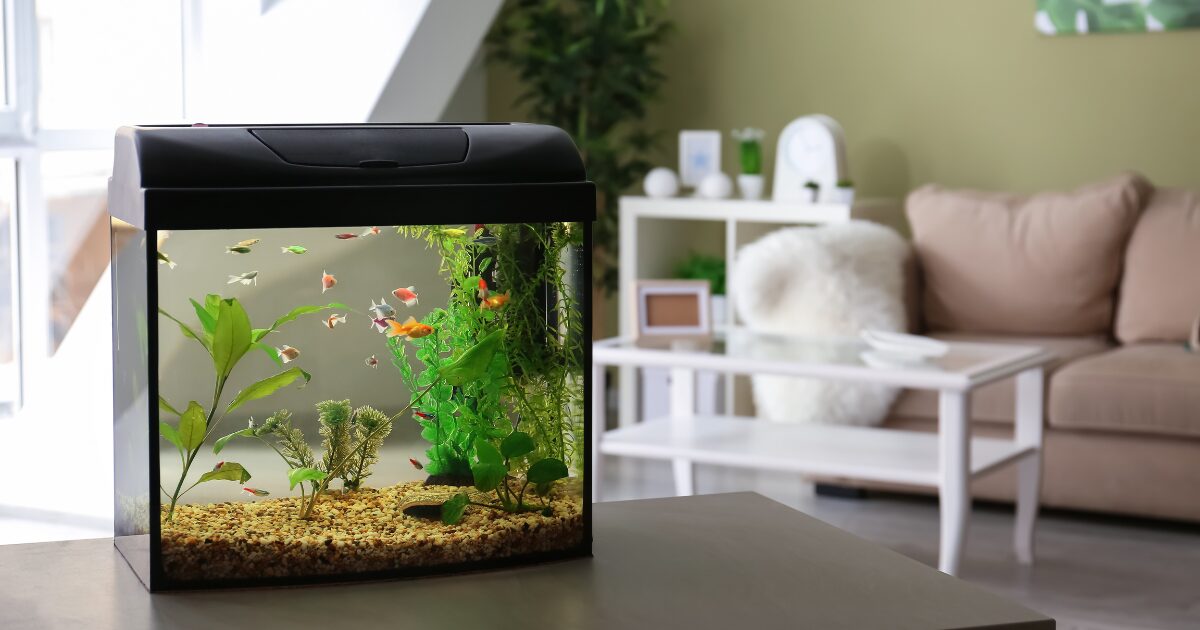
When it comes to setting up your easy fish tank setup for beginners, choosing the right tank is the first and most important step. The size, shape, and design of your aquarium will determine how much space it takes up in your dorm room, how easy it is to maintain, and what type of fish you can keep. Here’s how to choose the best tank for your space.
Consider the Size:
For most dorm rooms, a 10-gallon tank is the ideal starting point. It’s large enough to give your fish plenty of space to swim and grow, but not so large that it takes up too much room or becomes a hassle to maintain. In general, the rule of thumb is to allow about one inch of fish per gallon of water, but you’ll also need to consider factors like water filtration and oxygen levels.
If you have more space and are looking for something a bit larger, a 20-gallon tank might be an option. This is a great size for beginners because it allows for more fish and a more stable environment for your aquarium. A larger tank also gives you more flexibility in terms of aquascaping (adding plants, rocks, and other decorations), and it’s easier to maintain in the long run since the water quality remains more stable in a bigger tank.
However, larger tanks also require more care, more equipment, and can take up more floor space in a small room. If you’re limited on space, a 10-gallon tank is perfect. But make sure you place it in an area that’s not too crowded with other furniture and is far away from any windows where sunlight could disrupt the water temperature.
Tank Material:
When choosing a tank, you’ll encounter two main types of materials: glass and acrylic. Glass tanks are the most common, as they are durable, scratch-resistant, and come in a variety of shapes and sizes. However, glass can be heavy and prone to breaking if not handled carefully.
Acrylic tanks are lightweight, less likely to break, and offer better insulation, but they can scratch more easily. For dorm rooms, acrylic tanks are a great option if you’re looking for something lighter and more portable. However, glass tanks tend to be more affordable and easier to find, so they’re the go-to choice for most beginners.
Tank Style and Setup:
The style of the tank matters too. Some easy fish tank setups for beginners come as complete kits, including everything you need, such as a filter, heater, and light. These kits are super convenient, especially if you’re short on time or unsure about which components to buy. Look for kits that have built-in filtration systems, as they make the setup process much simpler.
In terms of style, decide whether you prefer a traditional rectangular tank or something more unique, like a hexagonal or cylindrical aquarium. Consider your room’s layout and choose a tank that complements your space and overall decor.
Once you’ve selected your tank, don’t forget to think about the stand or cabinet. A sturdy stand is crucial, especially when your tank is filled with water. It should be able to support the weight of the tank and fit comfortably in your room. Many stands come in a modern style, adding to the aesthetic of your space while providing extra storage for accessories and supplies.
Essential Equipment You Need for an Easy Fish Tank Setup for Beginners: What to Buy and Why
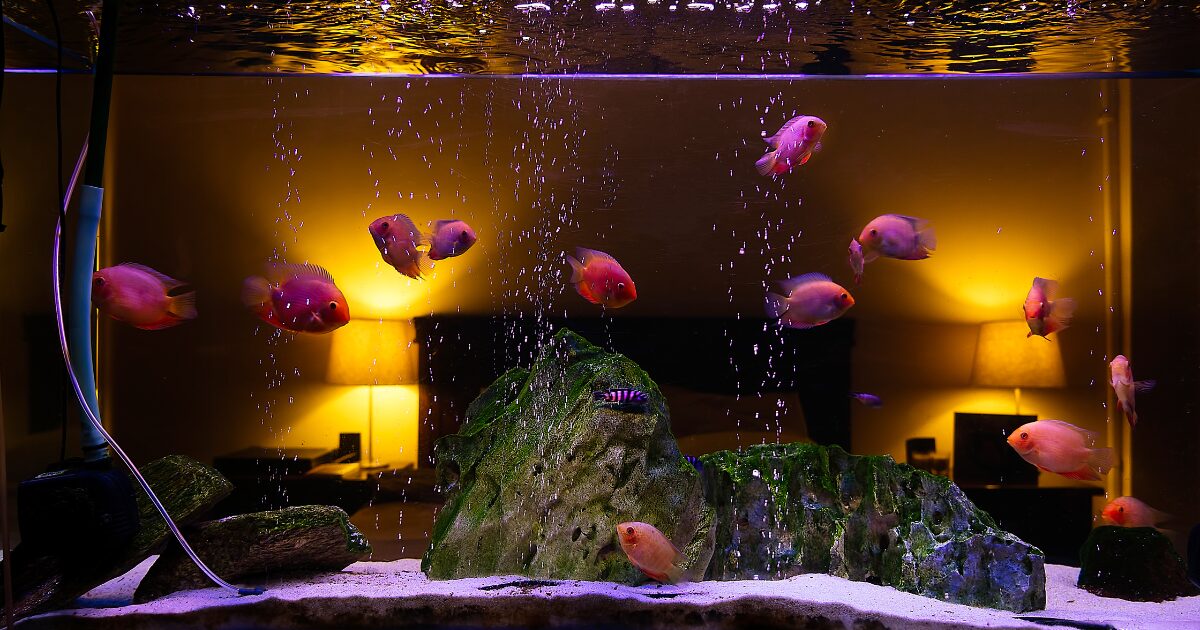
Now that you’ve picked your tank, it’s time to think about the essential equipment that will make your easy fish tank setup for beginners functional and healthy. You don’t need to go overboard with fancy gadgets—just a few key pieces will ensure your fish thrive in their new home.
1. Filter:
A filter is one of the most important pieces of equipment you’ll need. It helps keep the water clean and free from harmful toxins, which is essential for the health of your fish. Most beginners’ fish tanks come with a filter, but if not, make sure to choose one that’s appropriate for the size of your tank. The filter should be able to handle the volume of water in your aquarium and effectively remove debris, waste, and excess food.
2. Heater:
Tropical fish, which are ideal for beginner tanks, require warm water to thrive. A reliable heater will help maintain a consistent water temperature, usually between 74-80°F (23-27°C). A submersible aquarium heater is the most common choice, and it should be able to maintain the desired temperature for your specific fish species. Make sure to purchase a heater that’s designed for the size of your tank.
3. Lighting:
Aquarium lighting is not only crucial for your fish, but it also helps plants in the tank thrive. LED lighting is energy-efficient, comes in a variety of colors, and can help set the mood in your room. For a more natural look, consider lighting that mimics the sun’s natural cycle, with periods of light and darkness. The lighting should be on for around 8-12 hours a day, as excessive light can promote algae growth.
4. Thermometer:
A thermometer is necessary for keeping track of the water temperature. Too high or too low of a temperature can stress your fish, so having a thermometer helps you ensure your fish are comfortable. Most thermometers are easy to use, and they come in both digital and analog forms.
5. Substrate:
Substrate refers to the material you place at the bottom of your tank, such as gravel, sand, or even plant soil. Not only does substrate provide a natural look, but it also helps anchor plants and provides a surface for beneficial bacteria to thrive. Make sure to choose a substrate that suits the fish and plants you want to have.
6. Water Conditioner:
Before filling your tank, you’ll need to treat the water to remove chlorine and other harmful chemicals. A water conditioner will neutralize these elements, ensuring that the water is safe for your fish. Many water conditioners are affordable and easy to use, and they’re a must-have for anyone setting up an easy fish tank setup for beginners.
By gathering these essential pieces of equipment, you’ll be well on your way to creating a happy and healthy aquatic environment for your new fish friends.
Setting Up Your Aquarium: An Easy Fish Tank Setup for Beginners Step-by-Step
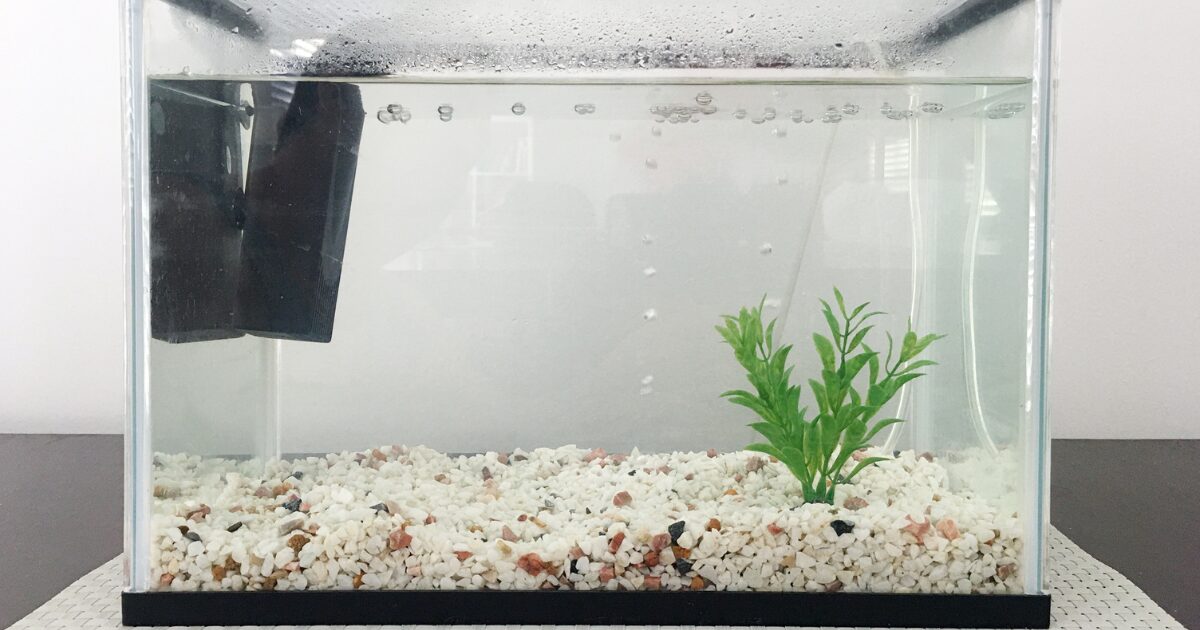
Now that you’ve got your tank and equipment, it’s time to set everything up! Setting up an aquarium doesn’t have to be complicated. With this step-by-step guide, you’ll have your easy fish tank setup for beginners ready in no time!
1. Clean the Tank and Equipment:
Before setting up your aquarium, thoroughly rinse the tank, filter, and any decorations with water. Avoid using soap or chemicals, as these can harm your fish. You don’t need to disinfect everything; a simple rinse will suffice.
2. Set Up the Tank:
Place your tank on a level, sturdy surface. Ideally, this should be a place where you can enjoy the view but where the tank won’t be disturbed too much. Make sure the area is far from windows, as direct sunlight can affect the water temperature.
3. Add Substrate:
Next, add your substrate to the tank. Spread it evenly across the bottom of the tank, creating a gentle slope from front to back. This provides a more natural look and allows plants to root more easily. Make sure the substrate is thick enough to support plants but not so thick that it affects the filtration system.
4. Install the Filter and Heater:
Set up the filter and heater according to the manufacturer’s instructions. Position the filter in a location where it can circulate the water efficiently. Make sure the heater is fully submerged and plugged in. It may take some time to heat the water to the desired temperature, so be patient.
5. Fill the Tank with Water:
Carefully fill the tank with water. You can place a plate or plastic bag on the bottom of the tank to avoid disturbing the substrate as the water is added. Slowly fill the tank to about three-quarters of its capacity.
6. Set Up the Lighting:
Place your aquarium light on top of the tank. If you have live plants, make sure the light is strong enough to support them. Set the lighting to turn on for about 8-12 hours a day, and adjust it as needed based on the plants and fish you choose.
7. Let the Tank Cycle:
Before adding fish, let your tank run for at least 24-48 hours to ensure everything is working correctly. Check that the filter is working, the water is at the right temperature, and that there are no leaks. It’s a good idea to test the water for ammonia, nitrites, and nitrates to ensure the environment is safe for your fish.
How to Choose the Best Fish for Your Easy Fish Tank Setup for Beginners
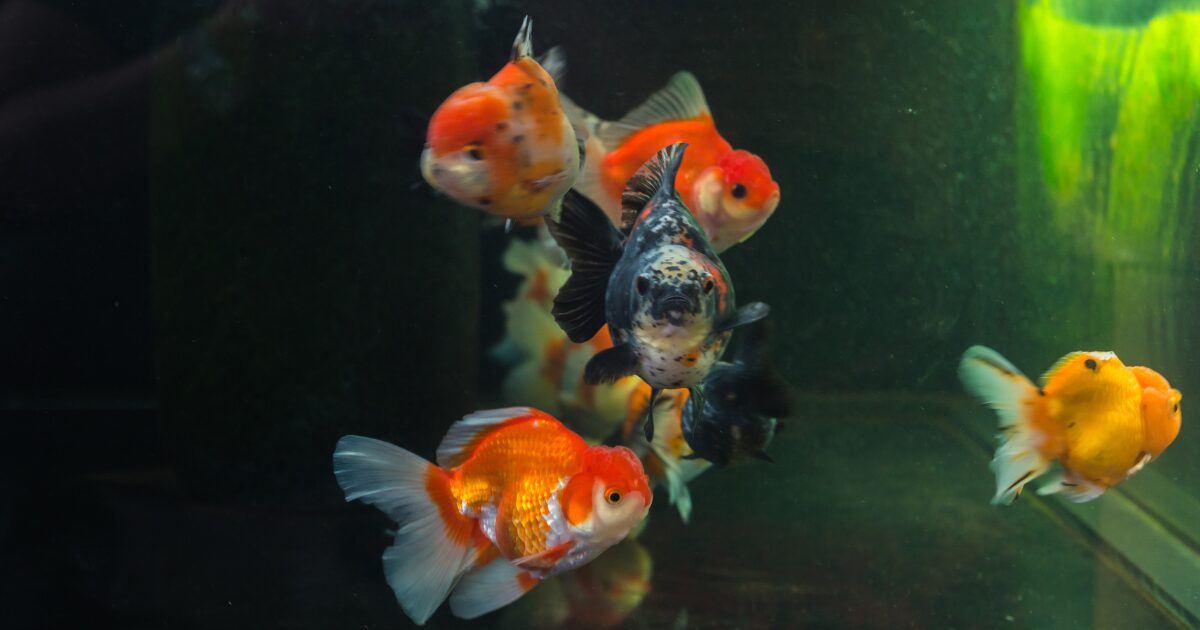
Now comes the exciting part—choosing the fish that will inhabit your aquarium! As a beginner, it’s essential to select fish that are hardy, easy to care for, and compatible with one another.
Here are some great options for your easy fish tank setup for beginners:
1. Betta Fish:
Betta fish are a popular choice for beginners due to their vibrant colors and low maintenance. They’re also small, so they work well in smaller tanks. However, keep in mind that male bettas are territorial and should not be housed with other males. They can live with peaceful species like snails and shrimp.
2. Goldfish:
Goldfish are another classic option. They’re friendly, easy to care for, and come in various sizes and colors. However, goldfish do produce a lot of waste, so it’s essential to have a good filtration system to keep the water clean.
3. Guppies:
Guppies are colorful, active, and easy to care for. They’re small and peaceful, making them great for beginner setups. Guppies are also livebearers, which means they give birth to babies rather than laying eggs, so be prepared for baby guppies if you have both males and females in the tank.
4. Neon Tetras:
Neon tetras are tiny, peaceful fish that thrive in schools. They’re known for their glowing blue and red colors, adding a beautiful pop of color to your tank. Tetras are social fish, so it’s best to keep at least five to six in a group.
5. Corydoras Catfish:
Corydoras are bottom-dwelling catfish that help keep the tank clean by scavenging for leftover food. They’re friendly, social fish that do well in small groups, and they’re excellent companions for peaceful fish like guppies and tetras.
Make sure to choose fish that are compatible with one another and with the size of your tank. Keep in mind that overloading the tank with too many fish can lead to poor water quality and stress for the fish.
Maintaining Your Fish Tank: Easy Tips for Keeping Your Aquarium Clean and Healthy
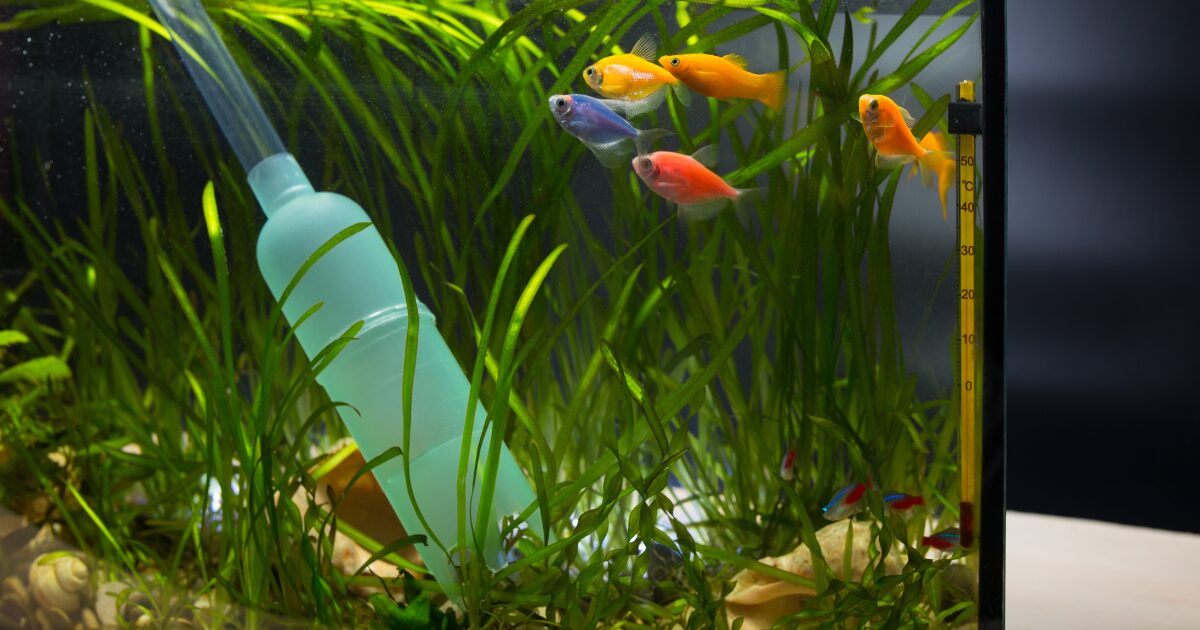
Maintaining your easy fish tank setup for beginners is essential to ensure that your fish stay happy and healthy. Regular maintenance doesn’t have to be time-consuming, but it’s important to stay on top of a few key tasks.
1. Regular Water Changes:
Performing regular water changes is crucial to keeping the water clean and free of harmful toxins. Aim for a 25% to 30% water change every two weeks, depending on the size of your tank. Use a siphon to remove debris and waste from the bottom of the tank and replace the water with fresh, dechlorinated water.
2. Monitor Water Quality:
Invest in a water testing kit to monitor the ammonia, nitrite, and nitrate levels in your tank. These chemicals can build up in the water and harm your fish if left unchecked. Testing the water regularly helps you ensure your aquarium stays balanced and safe for your fish.
3. Clean the Filter:
Your filter works hard to keep the water clean, so be sure to clean it regularly. Depending on your filter’s design, you may need to rinse it in aquarium water once a month to remove debris and maintain its efficiency.
4. Avoid Overfeeding:
Overfeeding is one of the most common mistakes new fishkeepers make. Too much food can pollute the water, so only feed your fish small amounts twice a day. Remove any uneaten food after a few minutes to prevent it from decaying in the tank.
5. Check for Fish Health:
Regularly check your fish for signs of illness or stress, such as unusual swimming patterns, faded colors, or lesions. Keeping an eye on your fish’s behavior helps you catch problems early before they affect the entire tank.
Personalizing Your Easy Fish Tank Setup for Beginners: Adding Decorations and Plants for a Stunning Look
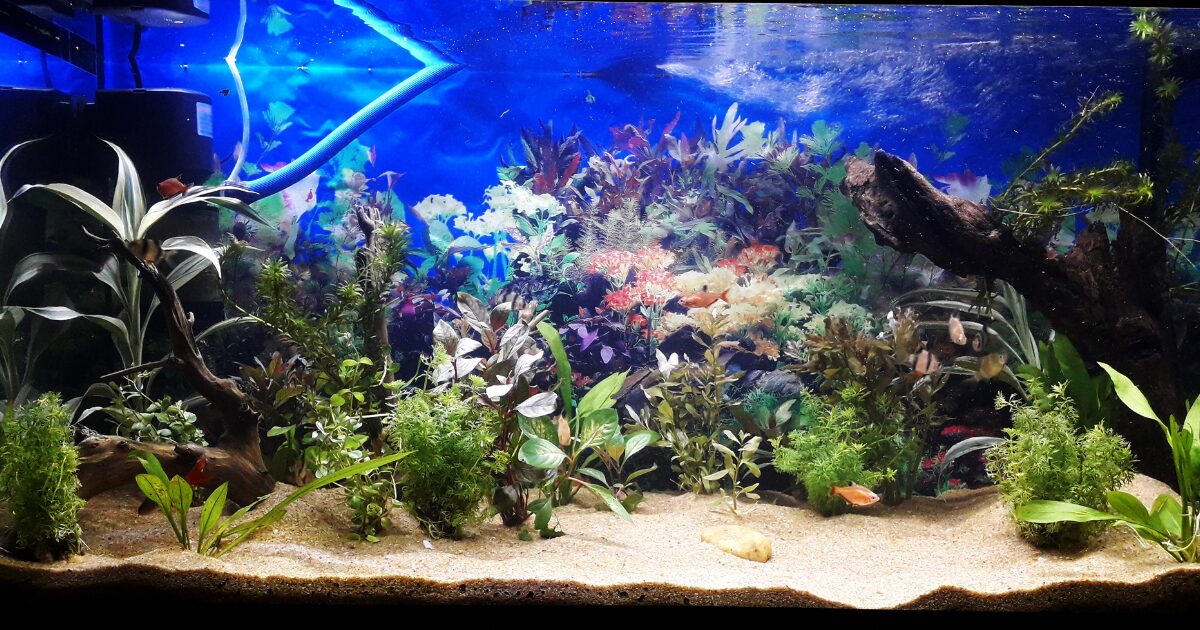
One of the most fun parts of setting up your easy fish tank setup for beginners is personalizing it! Adding decorations, plants, and other elements can make your tank look stunning and give your fish a more natural environment.
1. Decorations:
You can choose from a wide range of aquarium decorations, from natural-looking rocks and driftwood to colorful plastic plants and themed items like castles or treasure chests. Make sure to pick decorations that are safe for fish—avoid anything with sharp edges that could harm them.
2. Plants:
Live plants not only make your tank look beautiful, but they also provide oxygen for your fish and help maintain the water quality. Plants like Java fern, Anubias, and Amazon sword are great choices for beginners. They’re low-maintenance and don’t require a lot of care to thrive.
3. Aquascaping:
Aquascaping is the art of arranging decorations and plants to create a beautiful and balanced underwater landscape. Whether you prefer a minimalist design or a lush, plant-filled tank, aquascaping adds visual interest and provides hiding spots for your fish.
4. Backgrounds:
Adding a background to your tank can enhance the overall look and create depth. You can purchase a pre-made aquarium background or create your own using dark-colored paper or fabric.
With a little creativity, you can turn your easy fish tank setup for beginners into a vibrant and personalized aquatic paradise that both you and your fish will enjoy!
Conclusion:
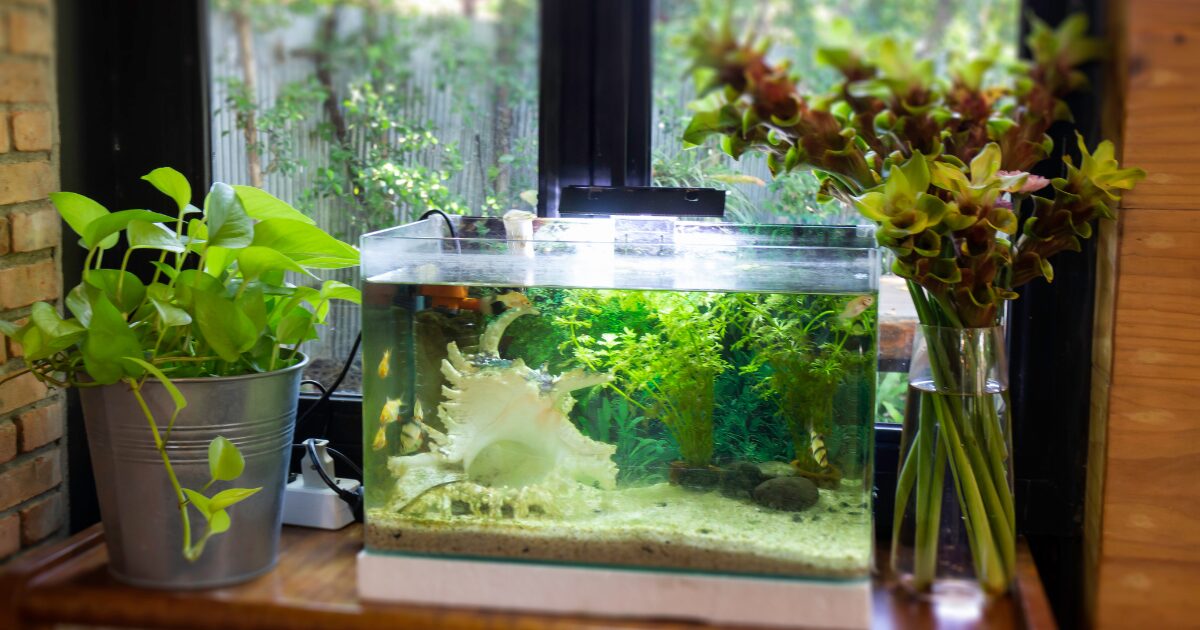
Setting up an easy fish tank setup for beginners is a rewarding experience that adds beauty and serenity to your space. With the right tank, equipment, fish, and maintenance routine, you’ll be able to create an aquatic paradise in your dorm room that’s both easy to care for and fun to admire.
For more tips, advice, and resources to enhance your fishkeeping experience, visit https://thepawshub.com/. Happy fishkeeping!